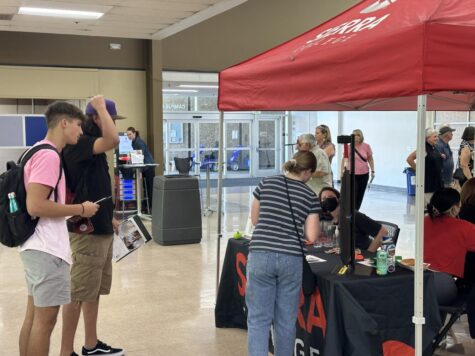After hundreds of lectures, awkward Zoom interactions, and more than a few 11:59 pm submission scrambles, many community college students will find themselves ready to transfer to a four-year college. Whether it’s to a UC, CSU, or another university, transferring is a necessary step for community college graduates who seek a bachelor’s degree.
While transferring may appear straightforward, the reality is that the process can be confusing and expensive. And unfortunately, it’s something that only a small number of students succeed at.
A CalMatters analysis shows that in 2021 only 9.9% of California Community College students who planned to transfer to a four-year school successfully did. The Sierra College transfer rate of 11% is an improvement over prior years. While it beats the state average, it’s a long way from the school’s 35% transfer goal.
The Cost of Too Much School
A 2021 report from educational non-profit, The Campaign for College Opportunity found that students spend between two to six years at the community college level prior to transferring.
After so much time spent in class, there are some heartbreaking, but all too familiar, scenarios that can occur during the transfer process. Most commonly, students ready to transfer find they’re missing prerequisites; leading to degree plans being pushed back for months, or even years.
Curiously enough, students can sometimes find they’ve taken too many classes and still fall short on prerequisites.
According to The Campaign for College Opportunity’s report, while most community college students need 60 credits to transfer to a college or university, many finish with far more than that. In California, the average community college student has over 90 credits by the time they earn their AA or AS.

Those extra credits represent potentially years of extra time in school and thousands of dollars in unnecessary tuition and fees.
A painful part of transferring for many students will be the realization that transferring with excess credits is no better than simply earning what’s required. There is a maximum number of credits that can be transferred. In the case of Sacramento State, community college students can bring a maximum of 70 semester credits when they transfer. The excess is lost.
So-called “credit loss” is when classes and their corresponding credits don’t transfer to a student’s new school. The knowledge gained in credit loss classes may be satisfying on an intellectual level, but not much else.
Worse still is the impact that the extra time in school can have on financial aid.
For example, two of the most popular forms of need-based financial aid, the Federal Pell Grant and Cal Grant, place limits on not just the amounts paid out, but how many semesters they pay for. The Pell Grant pays for up to six years, or 12 full-time semesters, and the Cal Grant lasts for the equivalent of four years of full-time classes. It’s easy to see how a student could exhaust their student aid at community college, leaving them to figure out how to pay for their bachelor’s via other methods.
Valuable Resources at the Transfer Fair
When registering for a class, community college students should consider two important questions. Does the class fulfill graduation or transfer requirements? Will it push back one’s potential transfer date? While those questions can be surprisingly difficult to answer, there’s no shortage of resources to help.
At the October 19th 2023 Sierra College Transfer Fair, faculty and representatives from over two dozen colleges and universities gathered to offer transfer guidance and advice, as well as information on their respective schools.

Kim Speers, Sierra College’s Career and Transfer Connections Manager said in an interview at the Fair that “There’s a lot of opportunity missed when [students] are not taking some time to explore, meet with their counselors, and connect with our Career and Transfer Connections office. This helps ensure that they have all the information they need to make an informed decision around their next steps with transferring to a college or university.”
Kya Webb, a Sacramento State Graduation & Retention Coordinator I interviewed at the Fair shared that it’s especially important for transfer students to be aware of their resources. Webb said:
“A lot of times in the transition from community college to the stateside, a lot of students just don’t know what resources are out there.”
She explained further: “I think it’s really important for students to know that there are a plethora of resources out there. As advisors and coordinators [we] aren’t just here to advise on GE [general ed] and graduation requirements and keep you connected, we’re here to help ensure your transition is as smooth as possible.”
Speers echoed that sentiment, “I encourage all students to come and visit their counselors for guidance. And also to visit our career and transfers office to answer any questions that they may have.”
Self-Advocate for Success
When asked what students miss when transferring out of community college, Speers said that it came down to students, “being their own advocate and accessing the college and university and website information directly.”
It’s a sentiment that Sierra College student Stephan echoed when interviewed at the Transfer Fair. While waiting in line to speak to a representative from UC Berkeley the accounting and economics major shared his confidence in his upcoming transfer. “I think I’m pretty informed [about transferring]. My friend transferred last year, and I got a lot of information from them. And he told us that research and following up helps a lot.”
Stephan continued, “I’ve done my TAP already, I’ve done my research.”
UC TAP, or the UC Transfer Admission Planner, is a free tool that allows students transferring from California community colleges to track and plan their classes against the requirements of six of California’s UC campuses to ensure they meet admission requirements.
For those considering a CSU, there’s the Articulation System Stimulating Interinstitutional Student Transfer, or ASSIST. Like UC TAP the ASSIST tool is free to use and helps students ensure they’re meeting the admission requirements prior to transferring out of community college.
Plan and Stay Positive
While there is no shortage of challenges facing community college students looking to transfer, there’s every reason to stay optimistic; provided they develop a transfer plan and follow through.
Avoid extra classes that will not meet transfer requirements.
Stay aware of prerequisites and prioritize them.
Be aware of ongoing student aid availability and try not to deplete it before transferring.
Utilize online resources like UC TAP and ASSIST to stay on top of transfer progress.
Meet with counselors regularly, especially if there’s a change in your degree plan. Academic counselors are an important part of college life, but they’re not the only ones. Transfer counselors at a student’s current school, as well as their target school, should be an early part of every transfer plan.
Most importantly, understand that the transfer process is not always easy and students are not expected to accomplish it on their own. With a plan, some followthrough, and plenty of teamwork a smooth transfer process is very achievable.
Written and Reported by Greg Micek




